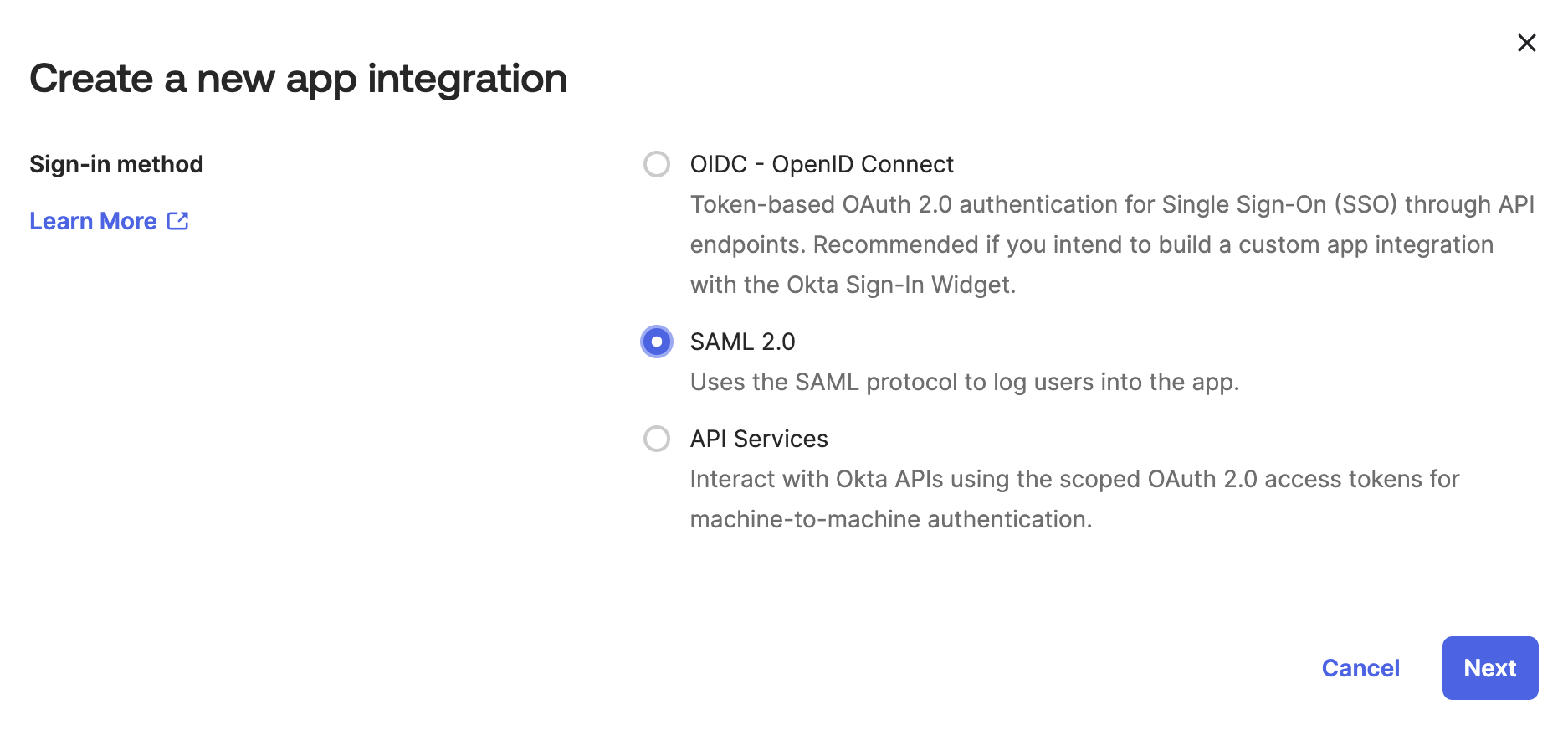SSO Configuration Steps in Okta
This guide provides step-by-step instructions for setting up Single Sign-On (SSO) with Okta using SAML 2.0.
This guide provides step-by-step instructions for setting up Single Sign-On (SSO) with Okta using SAML 2.0.
1. Create an App Integration
- Log in to Okta and navigate to Applications.
- Click Create App Integration.
- Select SAML 2.0 as the sign-on method.
- Click Next.

2. Configure SAML Settings
General Settings
- App Name: K1x SSO
- If your users do not actively use the Okta Dashboard, check “Do not display application to users”.
- Click Next.
SAML Settings
- Single sign-on URL: Provided as Assertion Consumer Service URL.
- Audience URI (SP Entity ID): Provided Audience URI.
- Default Relay State: Leave blank.
- Name ID Format: Unspecified.
- Application Username:
- If you use an email address as the login for Okta ‚Üí Select Okta Username.
- Otherwise ‚Üí Select Email.
- Update Application Username On: Set to Create and Update.
- Leave Advanced settings as default.
3. Configure Attribute Statements
- firstName ‚Üí Unspecified ‚Üí user.firstName
- lastName ‚Üí Unspecified ‚Üí user.lastName
- email ‚Üí Unspecified ‚Üí user.email
Click Save.
4. Retrieve Configuration Details
After the page reloads, locate the following details from your configuration:
- Sign-on URL
- Issuer
- Signing Certificate – Download and send as a
.certfile.
Forward the above items to your K1x Technical contact.
5. Final Steps
This configuration provides your users with a SAML App Tile on their Okta Dashboard.
If you prefer that users automatically redirect to an application instead of going to the Okta Dashboard, you can update the Relay State accordingly.
For additional support, contact your K1x Technical contact.
Tips:
- Regularly save your work and verify changes before refreshing or navigating away from the page.
- Document any recurring issues with screenshots and detailed descriptions to assist technical support.
For further assistance, contact the K1x Support Team by clicking on the "Get Help" button on our apps or in our Help Center.
